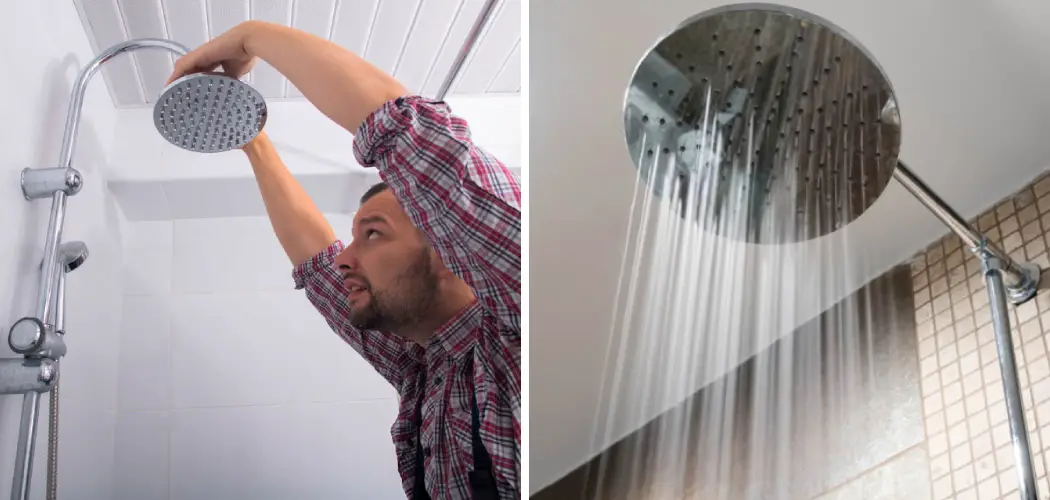Hey there, fellow DIY enthusiasts! Are you tired of dealing with a shower that refuses to turn off no matter what you do? Don’t worry, you’re not alone. It can be incredibly frustrating when you’re trying to enjoy a nice, relaxing shower, and all you’re left with is the constant drip, drip, drip of water.
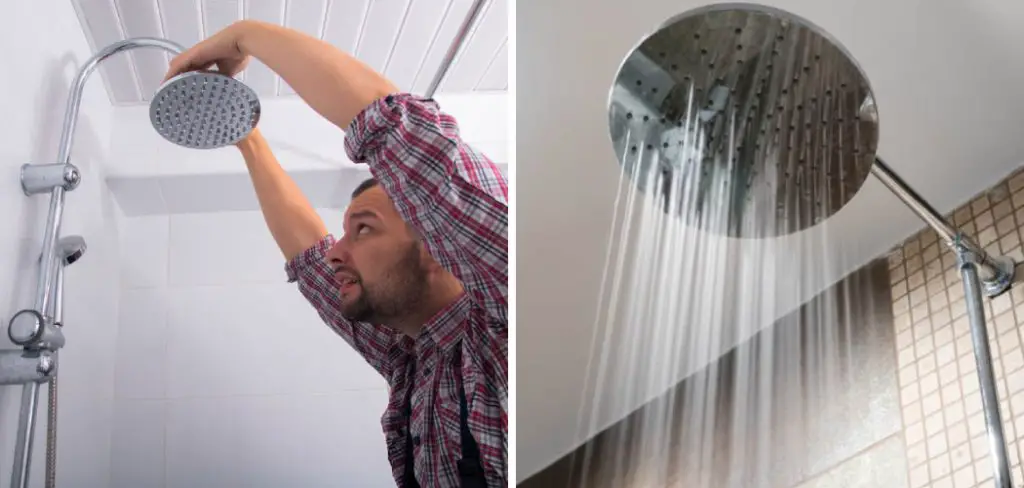
But fear not because, in this blog post on how to fix a shower that won’t turn off, we’re going to dive into some easy and practical solutions to fix that persistent problem once and for all. So grab your tools and get ready to become your plumbing hero as we uncover the secrets to getting your shower back in working order.
Trust me, you’ll be saving money on plumber bills and enjoying those uninterrupted showers in no time. Let’s get started, shall we?
What Will You Need?
Before jumping into the actual methods of fixing a shower that won’t turn off, gathering all the necessary tools and materials is important. The last thing you want is to be halfway through the process and realize you need an essential tool. So let’s go over what you’ll need:
- Adjustable wrench
- Screwdriver (Phillips or flathead, depending on your shower’s hardware)
- Replacement cartridge (if needed)
- Plumbers tape
- Bucket or bowl
- Vinegar or a descaling solution (if dealing with hard water buildup)
Now that you have everything you need let’s get to the fun part – fixing that pesky shower.
10 Easy Steps on How to Fix a Shower That Won’t Turn Off
Step 1. Check the Handle
The first step in fixing a shower that won’t turn off is to check the handle. Sometimes, the handle may just be stuck or loose, which can cause the water to run continuously. Try tightening any screws or adjusting the grip to see if this solves the issue.
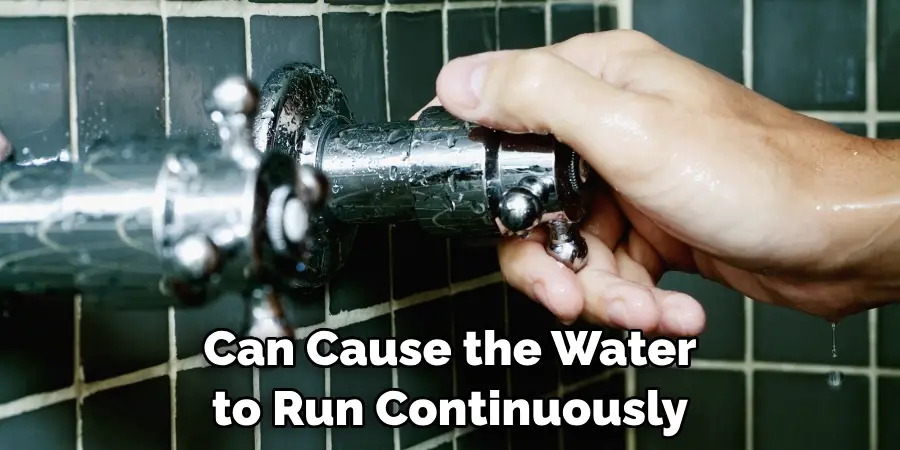
Step 2. Replace the Cartridge
If checking and adjusting the handle does not work, then replacing the cartridge in your shower’s valve may be necessary. The cartridge controls the water flow and can become worn out over time, causing it to malfunction. Consult your shower’s manual or contact a professional plumber for assistance with replacing the cartridge.
Step 3. Call a Plumber
If neither of these solutions works, calling a plumber for assistance may be best. A more serious underlying issue with your shower’s plumbing could require professional expertise to fix. A plumber can diagnose and repair any problems with your shower’s valve or other components that may be causing it to stay on even when turned off.
Step 4. Regular Maintenance
To prevent further problems with your shower not turning off, it’s recommended to perform regular maintenance. This involves frequently cleaning the showerhead and valves to prevent hard water deposits and build-up. Additionally, lubricate the valve stem regularly with silicone grease to ensure a smooth operation. This proactive approach can save you from a lot of hassle and potential repair costs in the future.
Step 5. Prevent Future Issues
To avoid facing a similar issue, consider installing a water softener if you live in an area with hard water. Hard water can cause mineral deposits that may lead to your shower not turning off properly. Additionally, regularly check the condition of your shower cartridge and replace it if you notice any signs of wear or damage. Remember, a little preventative maintenance can go a long way in saving you from future plumbing headaches.
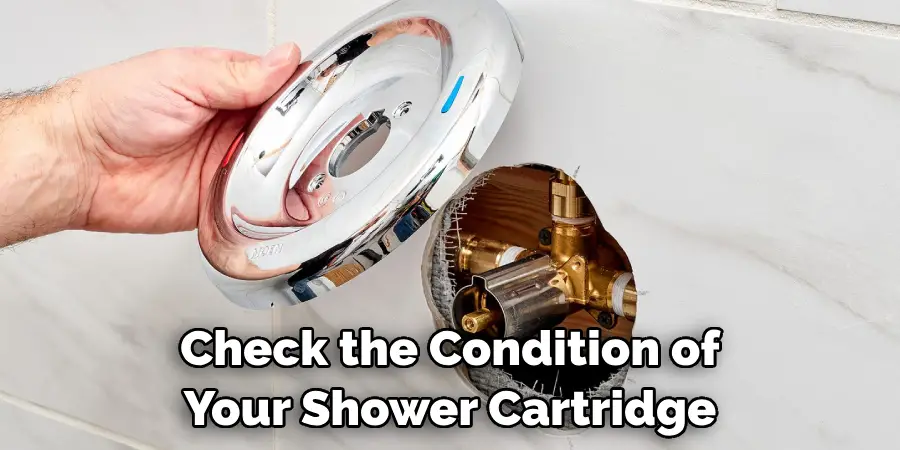
Step 6. Consider a Complete Replacement
If all the above steps fail or if your shower system is notably old and prone to regular issues, consider a complete replacement. While this can be a larger initial investment, it could save you from the constant stress and cost of recurring repairs. When choosing a new shower system, opt for a trusted manufacturer with positive reviews and a good warranty. A professional does installation to ensure your new shower operates flawlessly and lasts for many years to come.
Step 7. Professional Inspection
If replacing the shower system doesn’t resolve the issue, it’s time to schedule a professional inspection. This step is crucial as there could be underlying problems with your house’s overall plumbing system that aren’t limited to the shower. Leaks in the pipelines, pressure issues, or faulty installations could all be culprits. A professional plumber inspecting your system can help identify these more significant issues, leading to more comprehensive and lasting solutions.
Step 8. Regular Follow-ups
After you’ve had your plumbing system inspected and any issues addressed, you must schedule regular follow-ups with your plumber. These check-ups can help ensure that your plumbing system, including your shower, continues functioning correctly.

A professional can spot potential problems before they turn into major issues, saving you time, money, and stress in the long run. So don’t consider your job done after just fixing your shower; keep an eye on it and give it the attention it deserves to prevent future problems.
Step 9. Educate Yourself
While you may not be a professional plumber, understanding the basics of your home’s plumbing system, including how your shower operates, can be immensely beneficial. This knowledge can help you troubleshoot minor issues independently, recognize when professional help is needed, and even ensure the professionals are doing their job correctly.
Many resources are available online and in libraries to help you learn more about plumbing. A little knowledge can go a long way in maintaining a smooth-running home.
Step 10. Regular Upgrades
As technology and home appliances continuously evolve, so do their features and functions. It’s important to consider regular upgrades to your shower system to incorporate the latest technology and benefits these offer. Newer models often come with enhanced water efficiency, advanced temperature controls, and better durability, which can enhance your showering experience and potentially prevent issues like the shower from turning off.
It’s advisable to consult with a plumbing professional to understand the best options for your needs and to ensure proper installation. Remember, regular upgrades can be a worthwhile investment in the long run.
By following these ten easy steps, you can effectively fix a shower that won’t turn off and prevent future issues.
5 Additional Tips and Tricks
- Stay Calm and Turn Off the Water Supply: If your shower won’t turn off, don’t panic. Locate the main water supply valve and turn it off to stop the water flow.
- Identify the Type of Faucet: Knowing your shower system is crucial. Whether it’s a cartridge, ball, or compression faucet, each requires a different approach to fixing.
- Check for Visible Damage: Inspect the shower handle and the faucet. Visible cracks or damage could be causing the issue.
- Replace Faulty Parts: If the shower still doesn’t turn off, it might be a sign of a worn-out component. Replace any faulty parts like a warped washer or a damaged cartridge.
- Seek Professional Help: If none of the above works, it’s time to call a professional plumber. Sometimes, it’s better to leave it to the experts to prevent further damage.
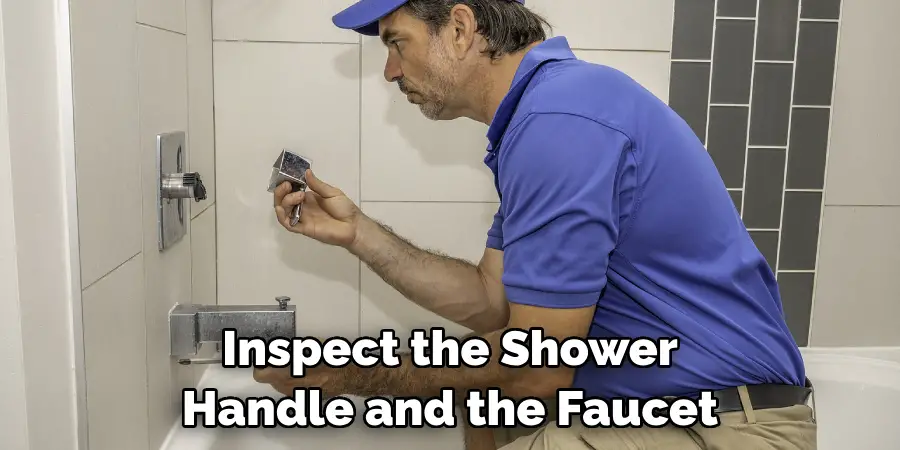
With these additional tips and tricks, you now better understand how to fix a shower that won’t turn off.
5 Things You Should Avoid
- Avoid Forcing the Handle: If your shower won’t turn off, never force the handle or knob. This could lead to further damage and complicate repairs.
- Neglecting Regular Maintenance: Don’t wait for problems to arise. Regularly check and maintain your shower system to prevent such issues.
- Ignoring Small Leaks: Small leaks may indicate a bigger problem. Don’t ignore them and take immediate action.
- Using Wrong Tools: Avoid using inappropriate tools for fixing. This could damage the parts and make the problem worse.
- DIY without Proper Knowledge: While DIY can sometimes resolve the issue, only attempt it with proper knowledge and guidance. If you’re unsure, it’s best to call a professional plumber.
By avoiding these common mistakes, you can save yourself from the hassle and expense of dealing with a shower that won’t turn off.
Conclusion
In summary, we have explored the various reasons why your shower might be having issues with turning off and provided some helpful solutions for each scenario. Whether it’s a faulty valve or a worn-out washer, there is always a solution to fix your stubborn shower. Always turn off the water supply before attempting any repairs, and consult a professional if unsure about the problem.
Don’t let a malfunctioning shower ruin your day – take action and get that refreshing and relaxing shower experience back. Not only will fixing your shower save you from unnecessary stress, but it will also help conserve water and money in the long run. So don’t wait any longer; get your tools ready and start troubleshooting!
Share this guide with your friends and family who might also be facing similar issues with their showers. Let’s spread the word about how to fix a shower that won’t turn off and make our daily routines more efficient. Trust me, nothing beats the feeling of stepping into a perfectly functioning shower at the end of a long day. Happy fixing!

